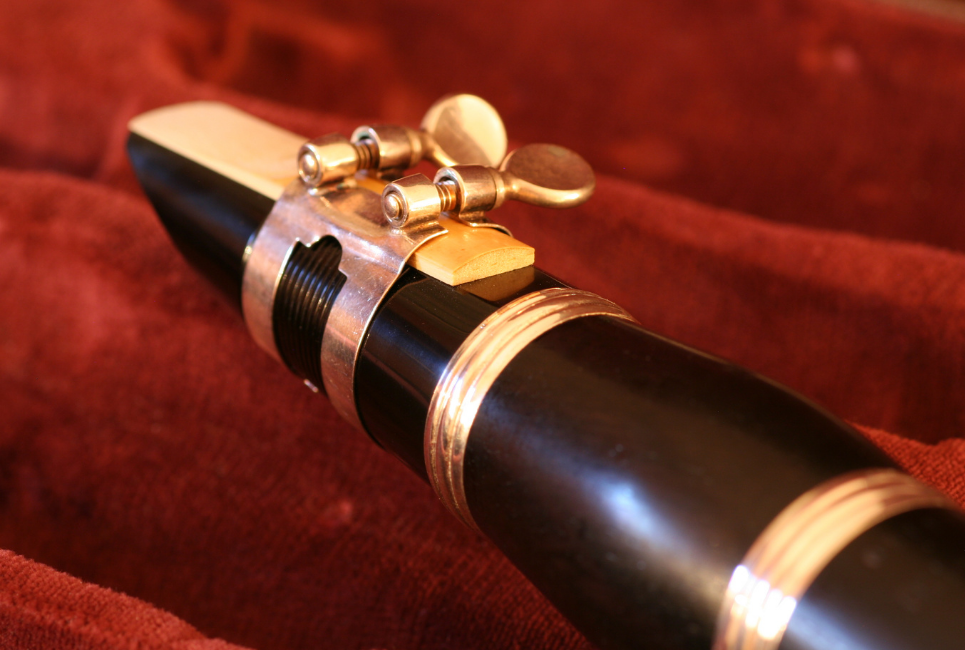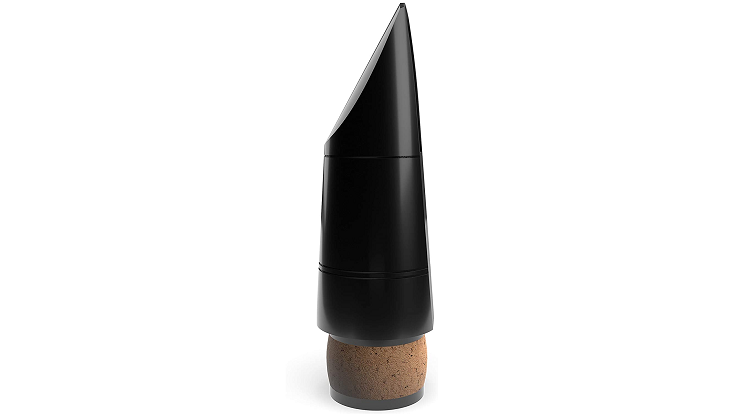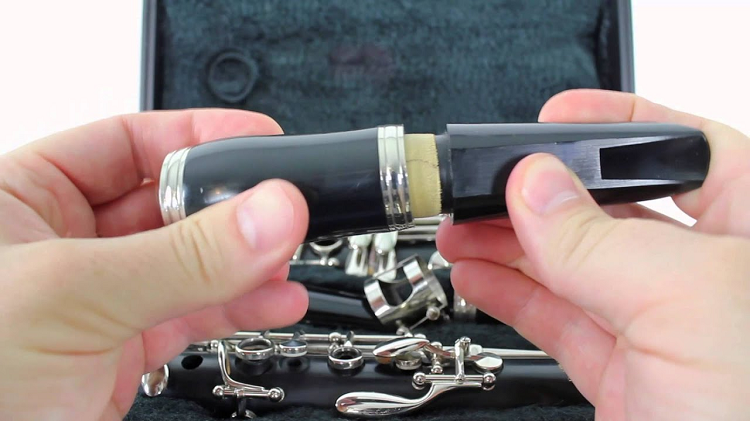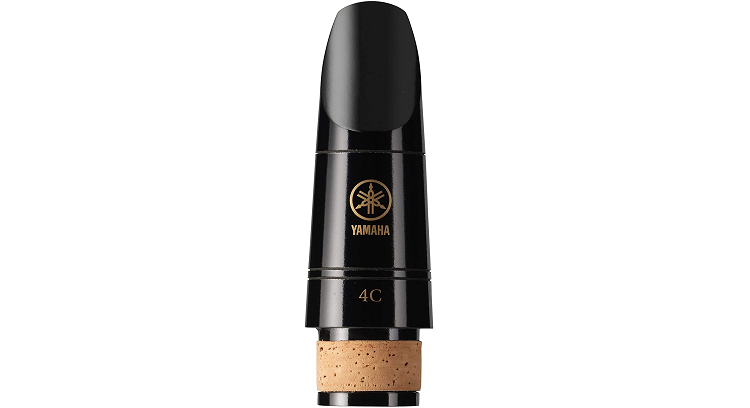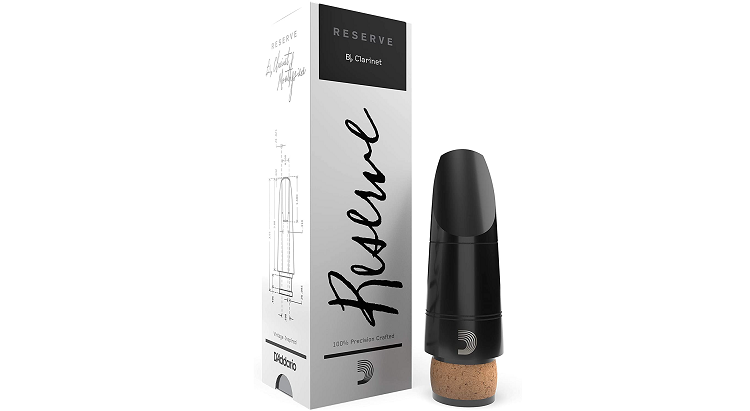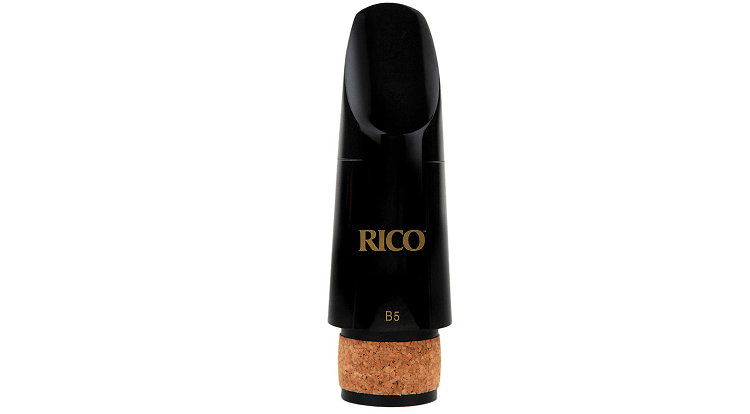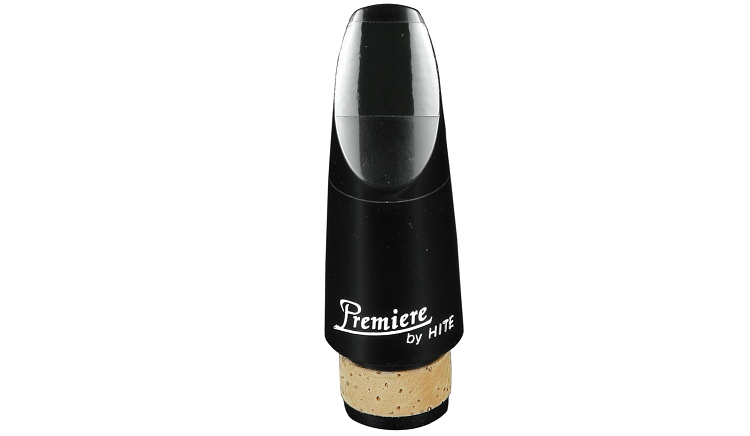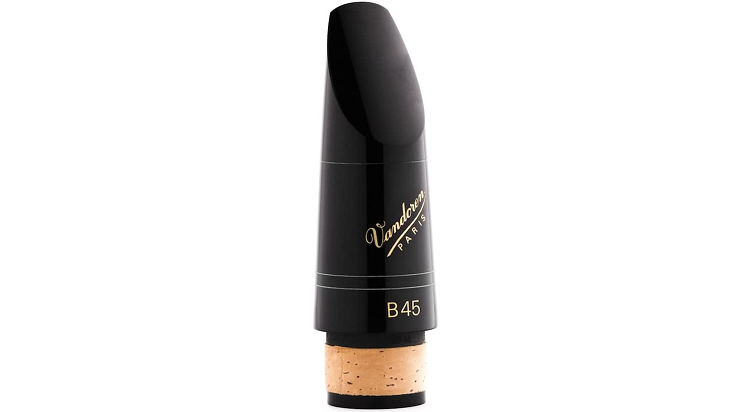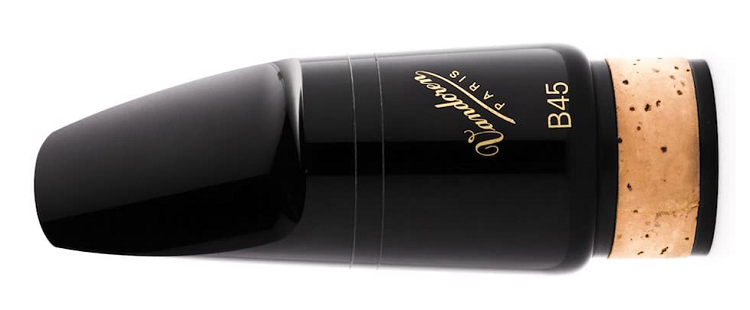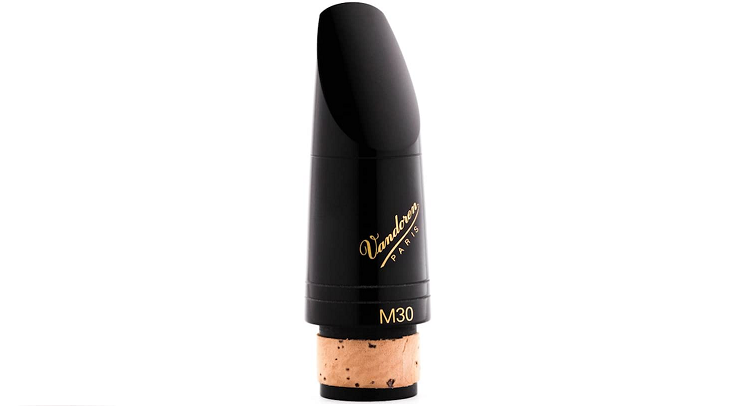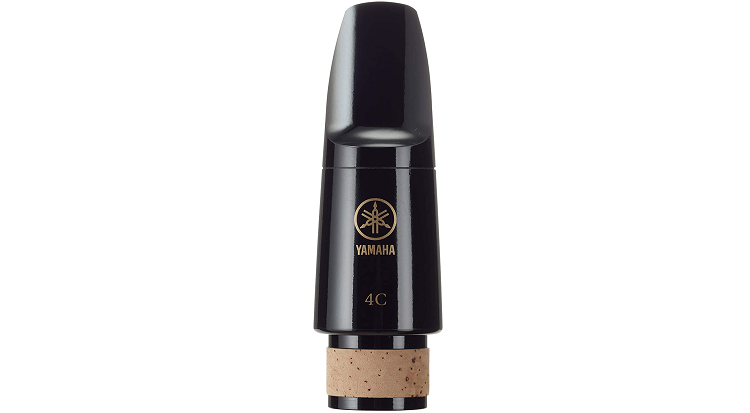- How to Find the Best Sopranino Saxophone - May 31, 2022
- How to Find the Best Contrabass Saxophone - May 30, 2022
- Trumpet Range Guide: Understanding The Entire Trumpet Range - May 19, 2022
Do you want to give a solo clarinet recital in Carnegie Hall? While it will take practice, it can’t hurt to find the best clarinet mouthpiece.
Having the best gear for you can help you enjoy playing and get better at music. Then, your dream of playing for a huge crowd may be more within reach than you think.
How to Find the Best Clarinet Mouthpiece
You may have the best, most expensive clarinet model you can find. But without the right mouthpiece, it might not sound any better than a cheaper instrument.
If you want to make the most of your gear, you need to know how to find the best clarinet mouthpiece. That way, you’ll be able to get a fantastic sound, and your affordable clarinet may even sound better than an expensive one.
Here are some steps you can take when shopping for your next clarinet mouthpiece.
Know Your Clarinet
First, you need to know what type of clarinet you have that needs a better mouthpiece. The most common type is a Bb (or soprano) clarinet, and this is what most players learn as beginners.
However, you may want to upgrade the mouthpiece for your Eb clarinet, alto clarinet, or bass clarinet. If you want to upgrade the mouthpiece for your clarinet in A, you can get a Bb mouthpiece since they’re so close in size.
The other types of clarinet are different enough in size that they need unique mouthpieces. If you buy the wrong size, you won’t be able to use it on the instrument you want.
Consider Your Current Mouthpiece
You should also take a look at the mouthpiece you currently use for the clarinet in question. Figure out the brand and model, and think about how you feel about the mouthpiece.
If you like the sound but want something more, you may want to buy another mouthpiece from that brand. On the other hand, you should avoid the brand of your current mouthpiece if you don’t like how it feels or sounds.
Sometimes, it can be nice to stick with what’s familiar. But if your reason for upgrading to change your playing, you may want to shop for a different brand of mouthpiece.
Think About Your Reeds
Your mouthpiece and reed need to work well together to help you get a good sound. A lot of brands that make reeds also make mouthpieces, so it can help to use the same brand for both.
Consider the brand and hardness of the reeds you use and if you’re willing also to get new reeds. Then, you can make sure the reeds and mouthpiece will make it easier for you to play the clarinet.
You don’t have to play the same brand of reeds as the mouthpiece. But if you don’t like how your current setup is, you may decide to change mouthpiece brands to something that will work with your reeds.
Compare Materials
The next thing you can do when shopping for a clarinet mouthpiece is to look at the materials. Most mouthpieces use plastic, which is durable and easy to keep clean.
However, you may find one or two rubber mouthpieces, which can be good for some settings. If possible, try mouthpieces that use a couple of different materials to see which you like better.
Then, you can select the material that feels and sounds good as you play. You may surprise yourself when it comes to what you prefer.
Determine Your Budget
As you look at some mouthpieces from various brands, you can get an idea of the cost. A good mouthpiece isn’t as expensive as a new clarinet, but it won’t always be cheap.
If you want to give yourself the best chance of finding the right mouthpiece, you should save a bit more money. But you can still find a good selection on a tight budget.
You may need to make compromises if you want to keep from spending a ton of money. Either way, you should know how much you’re comfortable paying for a new clarinet mouthpiece to help narrow your search.
Test Used Mouthpieces
A lot of players tend to stick to new mouthpieces, which makes sense. You know that someone hasn’t played them, so the odds are that the mouthpieces are in good condition.
However, you can also limit your search if you only look at new models. Used mouthpieces usually don’t cost as much as new ones, so you can save a lot of money while getting a good piece of equipment.
Be sure to sanitize the mouthpieces before you play them to make sure you don’t get sick. You should also try them in person with the seller if you can to make sure the mouthpiece fits you and your playing before you buy it.
Stick With Reputable Brands
You can find clarinet mouthpieces from tons of brands, especially if you shop online. If you don’t know any better, it can be easy to buy a cheap mouthpiece that may not last long.
Because of that, you should research brands before buying from any of them. I’d recommend sticking to brands such as Vandoren, D’Addario, and Yamaha.
Those brands have a good reputation for making quality gear for clarinetists. You shouldn’t have to worry about your mouthpiece breaking down on you.
Actually Try the Mouthpieces
You can do as much research as you want on clarinet mouthpieces, and that will help. However, you’ll eventually need to test them yourself to see which you like the best.
As with instruments, choosing a mouthpiece is very subjective, so what works for one player may not work for you. Grab your current clarinet and some music that covers the full range of the instrument.
Then, use that to test and compare the mouthpieces you find at a music store. Compare them to your current setup to make sure the mouthpiece you buy is different enough to be worth the cost.
Swap Out the Reeds
I briefly mentioned this, but the right reed-mouthpiece combination can make a huge difference. If you don’t find a good mouthpiece, you may want to reevaluate the reeds you use.
Most reeds don’t last that long anyway, so you can take some time to experiment. Look for reeds of different strengths and from various companies to figure out which works the best with you.
In some cases, a new reed will be more than enough for you. Then, you can wait a little longer to buy a new mouthpiece so that you can be pickier about your purchase.
Get a New Ligature
Another small change you can make with your current mouthpiece is to change out the ligature. The ligature is what holds the reed to the mouthpiece, and it can affect the sound more than you expect.
If you don’t have the right ligature for your mouthpiece or reed, the reed may not vibrate properly. Then, you may think the problem lies with the mouthpiece or reed.
As you shop around for the right mouthpiece, be sure to consider the ligature as well. Some mouthpieces won’t come with one, so it’s up to you to find the best combination.
Keep Searching
When I’m ready to buy anything new for an instrument, I know that I want to make that purchase ASAP. But the first option I try may not be the best one for me.
This has happened not with the clarinet but with other woodwinds. It can be very frustrating to not find the gear I need right away, but the wait has always been worth it.
I’ve been able to hold out for the perfect piece of equipment for my needs. Then, when I find what I need, the purchase is more satisfying, and I don’t have to worry about buyer’s remorse.
Best Clarinet Mouthpieces
When shopping for the best clarinet mouthpiece, you have a lot to consider. Of course, you should follow the steps I shared above, but what if you don’t know where to start?
I looked at mouthpieces from some popular and reputable brands. I made sure to find options at different prices in my search, and I even looked for mouthpieces for different types of clarinets.
Check out the following models that I found so that you can choose the best one for you.
Yamaha 4C
The Yamaha 4C comes standard with all-new Yamaha clarinets, but it’s great for all players to try. Yamaha built the mouthpiece to help beginners, professionals, and everyone in between.
It uses durable resin plastic, and the manufacturing process allows for very little error. That means there will be few differences between the 4C mouthpieces, if any differences exist.
You can use this mouthpiece on any brand of clarinet, so it’s a great upgrade. It’s also a nice choice if you bought a used clarinet and the seller didn’t include a mouthpiece.
Pros
- Easy to play
- Great for most players
- Durable plastic
- Consistent
- Affordable
Cons
- Not the best for professionals
D’Addario Reserve
You should also check out the D’Addario Reserve mouthpiece, especially if you’re an advanced clarinetist. The brand uses precision milling to make each mouthpiece consistent.
It uses hard rubber to help you get an even and beautiful sound from your instrument. You can choose from two pitch systems and four facings to get the perfect design for your needs.
Top players work with the craftsmen to make sure this mouthpiece is suitable for use. While it’s a bit expensive, it’s an excellent upgrade for serious students and aspiring professionals.
Pros
- Multiple options
- Consistent
- Player input
- Good sound
- Suitable for advanced players
Cons
- Pretty expensive
- Not for beginners
D’Addario Rico
If you like Rico reeds, you may like the D’Addario Rico mouthpiece. This particular model is a B5 mouthpiece, but you can choose from three tip openings and three different chambers.
Those options help you get the best possible sound, and the durable design keeps the mouthpiece from cracking. The polycarbonate material also keeps the mouthpiece in good condition.
It’s an excellent choice for players of all levels, and it’s not too expensive. However, you will need to buy a ligature separately.
Pros
- Easy to play
- Durable material
- Sounds great
- Affordable
- Good for all levels
Cons
- Can be hard to choose from the options
J&D Hite Premiere
If you’ve ever played the saxophone, you’ve probably heard of J&D Hite mouthpieces. The brand also makes the J&D Hite Premiere mouthpiece for the Bb clarinet.
This mouthpiece offers the quality of hard rubber but at an excellent price for beginners. Plastic is durable, so it can withstand whatever you throw at it without breaking.
You will need to get a ligature and mouthpiece cap separately, but that means you can choose the right gear for you. Then, you can add in this mouthpiece to get an excellent sound for classical or jazz music.
Pros
- Easy to play
- Affordable
- Durable
- Great for students
- Nice for saxophone doublers
Cons
- No ligature
Vandoren M13
The Vandoren M13 is an excellent mouthpiece for advanced clarinet players. It has a medium-long facing, and it’s perfect for playing notes in the high register.
This mouthpiece plays best when you tune to A=440, so it may not work as well in some ensembles. Still, it offers a fantastic sound, especially when you pair it with a Vandoren reed.
You can get a warm and rich tone with this model, so it’s useful for solo and chamber playing. However, make sure to save up extra money because this mouthpiece is more expensive than others.
Pros
- Great for advanced players
- Helps with high notes
- Works for ensemble playing
- Nice sound
- Easy to playt
Cons
- Expensive
- Can be a bit flat when tuning to A=442
Vandoren B45
Another popular mouthpiece from the same brand is the Vandoren B45. Bernard Van Doren, the grandson of the company’s founder, developed this mouthpiece with a universal design.
Its tip opening is 119.5, and it has a medium long facing. The traditional beak is another great feature, and you can use this mouthpiece for a lot of things.
This mouthpiece is particularly useful with Vandoren reeds, but you can use any reeds you like. However, you will need to save up quite a bit of money to afford it.
Pros
- Good specs
- Versatile
- Easy to play
- Works with different reeds
- Great design
Cons
- Somewhat expensive
Vandoren B45 (Bass)
If you like how the mouthpiece plays on your Bb clarinet, you can also get the Vandoren B45 for bass clarinet. Because it’s for a bigger instrument the tip opening is a bit bigger.
Like the other model, this one has a medium long facing, and it works well with Vandoren reeds. You can use this mouthpiece to get a good response, which is nice as a beginner bass clarinet player.
Sadly, it doesn’t come with a cap or ligature, so you will need to buy those as well. Then, you can choose the right combination of equipment to help you improve your playing.
Pros
- Easy to play
- Good opening
- Nice sound
- Great response
- Suitable for beginners
Cons
- Quite expensive
Vandoren M30
The Vandoren M30 is an excellent mouthpiece for your Eb clarinet. You get a flexible mouthpiece without compromising on an excellent sound.
It features a medium long facing, and it sounds great with Vandoren reeds that aren’t too hard or soft. This model provides a great response, and it can help with your intonation and articulation.
However, it’s quite expensive and doesn’t come with a ligature. But if you’re playing the Eb clarinet, you’re probably serious enough to be willing to spend more on those things.
Pros
- Easy to play
- Flexible
- Great response
- Good intonation
- Works with Vandoren reeds
Cons
- No ligature
- Expensive
Yamaha 4C (Alto)
Going back to the first mouthpiece I shared, the Yamaha 4C is also available for alto clarinets. If your alto is from Yamaha, it would have come with this mouthpiece.
But it can be a great upgrade if your alto clarinet is another brand. The plastic material is safe and durable, so you can use this mouthpiece for a long time.
It’s an excellent size, so it can make playing the alto clarinet relatively easy. Then, you don’t have to struggle to get a good sound on the not-so-common instrument.
Pros
- Easy to play
- Durable
- Affordable
- Good for beginners
Cons
- Unnecessary upgrade for Yamaha players
FAQs About How to Find the Best Clarinet Mouthpiece
Answer: A clarinet mouthpiece can make a huge difference in the sound and response of your instrument. If you pair it with the right ligature and reed, your mouthpiece may help you sound significantly better.
You might also find the right setup responds more easily. That can be nice if you play with others and need to get notes to come out at the right time to line up with your fellow musicians.
Answer: You can find some expensive mouthpieces because of the materials and manufacturing process. If a company uses materials that aren’t as common or easy to find, it will cost more to make the gear.
Some mouthpieces are also expensive because they may involve more manual work, such as testing. Either way, paying more can be good, especially as you advance and need more specific equipment to play well.
Answer: It’s time to get a new clarinet mouthpiece when your current setup isn’t giving you the sound you want. Maybe you try a new reed and/or ligature, and those don’t help.
In that case, the next best step is to test new mouthpieces with your current clarinet. Then, you can figure out if a new mouthpiece will give you the sound you desire.
Answer: If you don’t like the sound of your current instrument, you may need a new clarinet. However, that can be very expensive, so getting a new mouthpiece is a more affordable option.
Then, you can still get a good sound out of your clarinet. But you don’t have to spend thousands of dollars on a better clarinet.
Final Note on How to Find the Best Clarinet Mouthpiece
Whether you’re a beginner or professional, you should know how to find the best clarinet mouthpiece. Then, you can compare different options and find one that suits your playing.
I can’t stress enough that buying a mouthpiece is a very personal decision. However, you can’t go wrong with any of the Vandoren mouthpieces.
Looking for more interesting reading? Check out:

